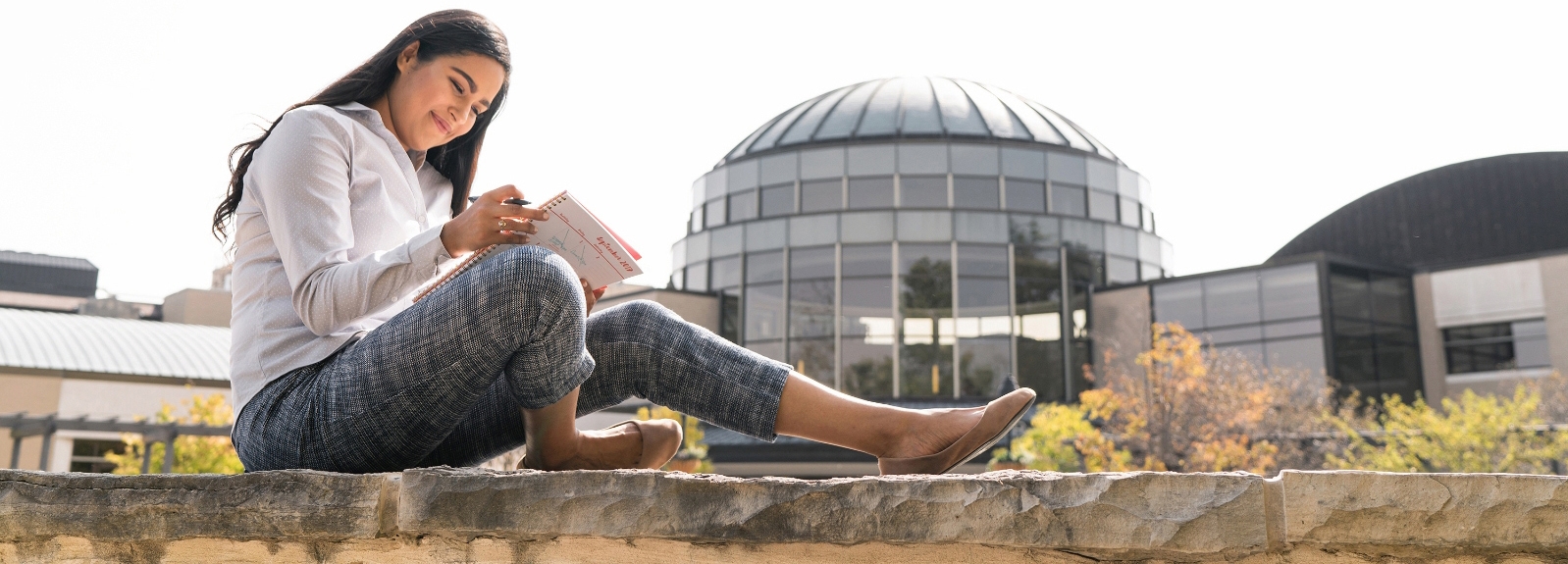Accelerate Faculty
Connecting Through Creativity
Molly Thornton '17 entered Alverno's undergraduate Art Therapy program wanting to work with people affected by post-traumatic stress disorder. The program helped her discover that her true passion lies in geriatrics.
With people living longer — by 2030, the federal government estimates that one in five Americans could be 65 or older — there's a growing interest in human services fields like art therapy, which offers quality-of-life benefits, stress relief and memory care.
Through the field placements that are a hallmark of Alverno's Art Therapy program, Thornton gained hands-on experience with inpatient memory care programs. She worked at two facilities that participate in an Alzheimer's Association program called Memories in the Making (MIM), which focuses on reminiscing, storytelling and problem solving through the creation of watercolor paintings.
Among the countless examples Thornton witnessed of the program's benefits, the one she recalls most vividly involves an older veteran with memory complications who was at first quite withdrawn. With Thornton's encouragement, he eventually began to talk about how he and his late wife had shared a love of sailing. By the end of the session he had created a painting of a sailboat and named it after his wife, Rosemary, and he even left Thornton a thank-you note saying he had enjoyed the experience.
“I thought that was a beautiful breakthrough,” Thornton says. “That this experience was meaningful to him really validated that I'm in the right field.”
Alverno's Art Therapy program places about 20 to 25 students each semester at one of 50 partner locations in the Milwaukee metro area, says Michele Burnie, who is the director of the Art Therapy program and coordinates field placements. “Most students will have one or two placements working with the elderly at either assisted-living centers or extended-care facilities because that's the primary job market for bachelor's students: activity directors or community art directors,” she explains.
An internship helped Christina Best '16 choose her career path. Now the coordinator of memory care at Villa St. Francis in Milwaukee, she is tasked with leading a new program to serve residents of this assisted-living facility who are experiencing dementia.
“It's hard for families to come in and see their parents declining or sometimes not even remember who they are,” she says. “But we get to know them as who they are right now, instead of who they used to be.”
Best values her interactions with her residents, whether it's simply sitting together in silence or working on an art project. But before she can experience these meaningful moments, she has to gain the residents' trust.
“Art therapy has a lot to do with building up that relationship and getting people to trust you,” she says. “There's so much that they teach you at Alverno — tone of voice, how to approach people, things to say and not to say. This preparation has helped me to approach residents and build strong relationships.”
Field placements help Alverno students further develop the skills to facilitate these connections, even with participants who have limited art experience or are initially vocal about their lack of talent and interest. After a few sessions, Burnie says, “The students report back, ‘I got 'em hooked!'”
During her student internships, Thornton ran MIM at the Wisconsin Veterans' Home in Union Grove, Wis., and the adult day health care center at Milwaukee's Clement J. Zablocki Veterans Affairs Medical Center. She now works as a programming coordinator at a nursing home in Green Bay, Wis., where she appreciates how art offers a way to communicate nonverbally.
“For aging individuals who are losing their memory and losing their independence, it offers a form of creative expression to reminisce and to keep developing and learning,” she says. “You can honor those parts of your life that are gone and keep moving forward.”

